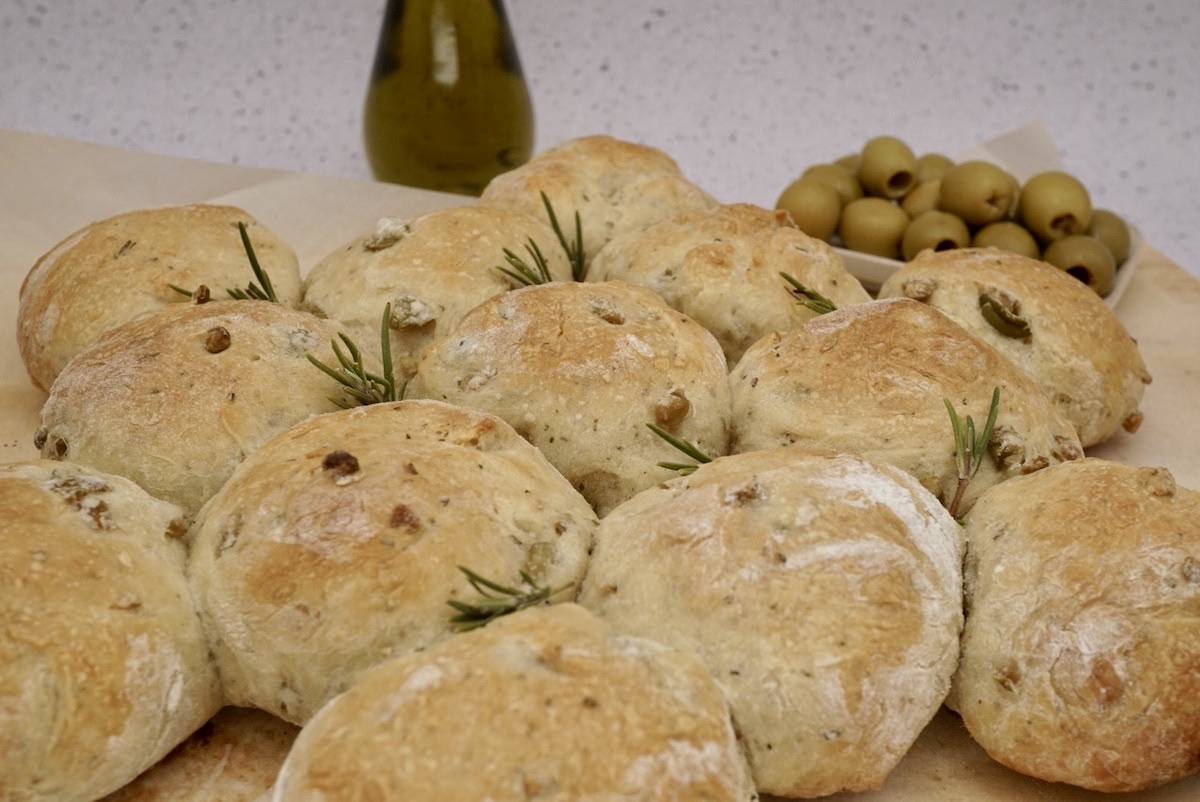
Rosemary and olive rolls are made using easy bake yeast and are baked in an arrangement which makes them perfect for sharing. Whether you are entertaining guests, preparing a family meal or dining on your own it will be easy to find a place for these savoury bread rolls alongside one of your favourite meals. Similar to no knead olive bread, they make a tasty accompaniment to many pasta dishes or salads served either hot or cold. They are also delicious dipped in olive oil or served as part of a mixed platter. The quantities in this tear and share bread recipe will make around 13 rolls.
Ingredients
- 375g bread flour - use a strong flour which is higher in protein than plain flour (all purpose flour) as it will give your bread a much better texture. Save your plain flour for biscuits or pastry.
- 3 teaspoons easy bake yeast - this recipe uses easy bake yeast to keep things straightforward. Simply add to the bowl with the other dry ingredients.
- 1 teaspoon of sugar
- 1 teaspoon of salt
- 100g pitted olives - either green or black depending on your preference. Just make sure that there are no stones!
- 1 tablespoon chopped fresh rosemary - freshly chopped herbs will invariably have more flavour than dried herbs
- 180ml to 200ml hand hot water
- 3 tablespoons olive oil
- A little milk to glaze the rolls before baking
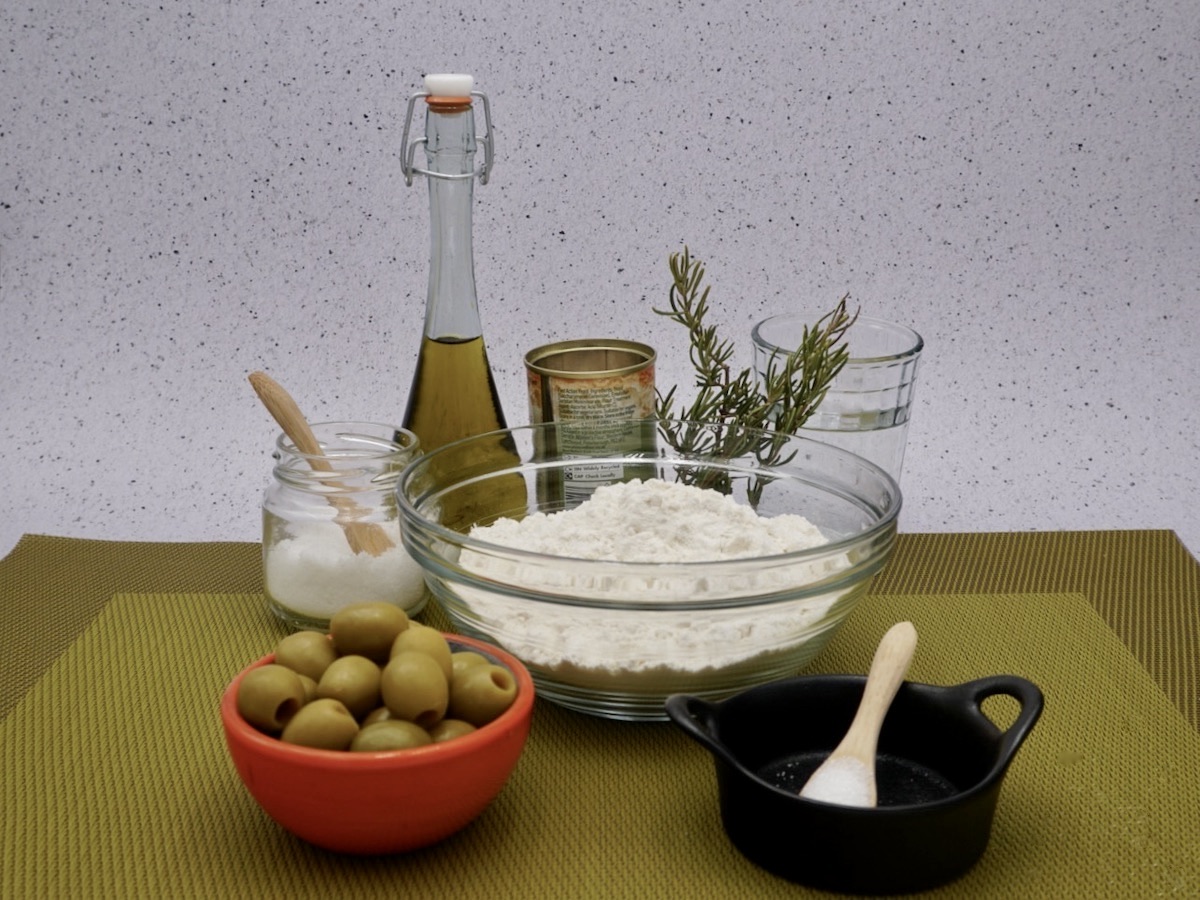
How to prepare
Chop the fresh rosemary leaves and chop or slice the olives ready to add to the dry ingredients for the dough.
Measure the flour, yeast, sugar, salt, rosemary and olives into a large bowl and mix.
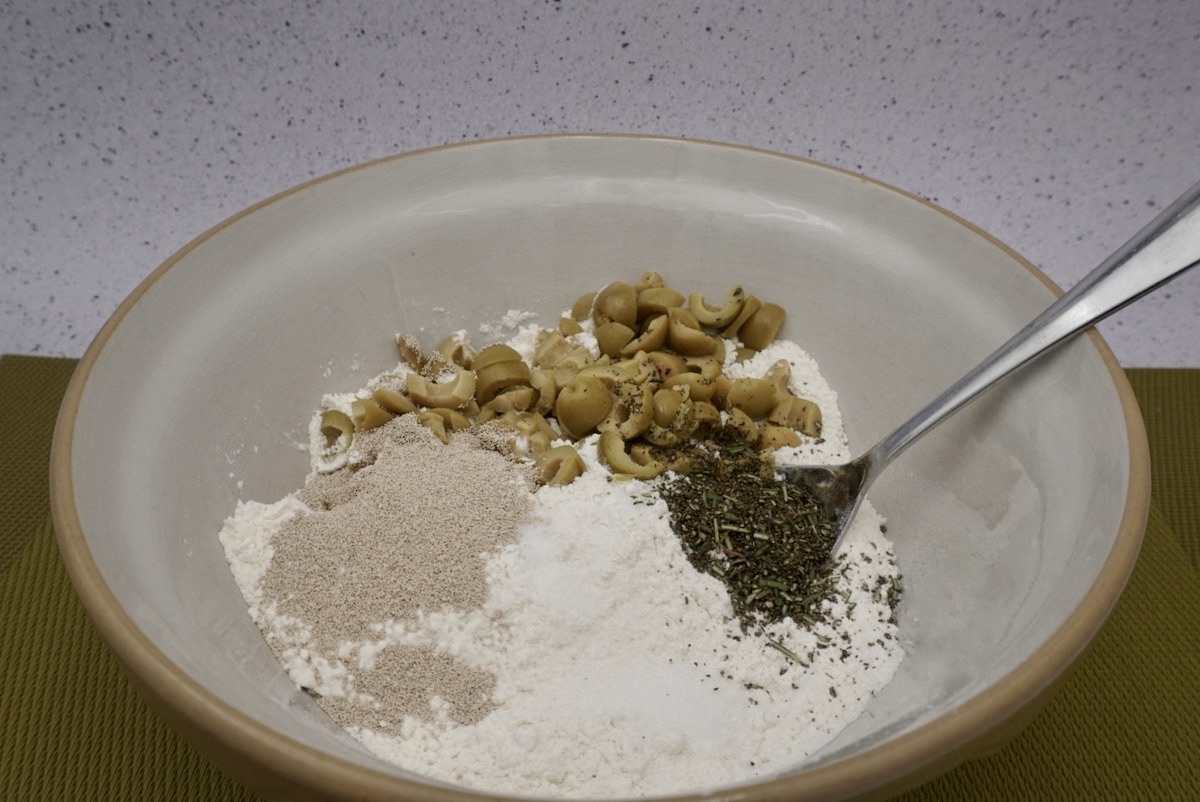
Heat the water until it is hand hot. The water will be at the right temperature when it is roughly the right temperature for a warm bath. If it is too hot it may kill the yeast, it is too cold it will not activate the yeast.
Start by adding 180ml and add more if needed after adding the olive oil. You are aiming for a ball of dough which is not too dry and not too sticky.
Add the olive oil.
Mix using an electric mixer with dough hooks for around 2 to 4 minutes until the dough is elastic and forms a ball. The exact amount of water needed will vary slightly depending on the flour used. If the dough is dry and stiff then add a little more water, it is is too wet and sticky add a little more flour.
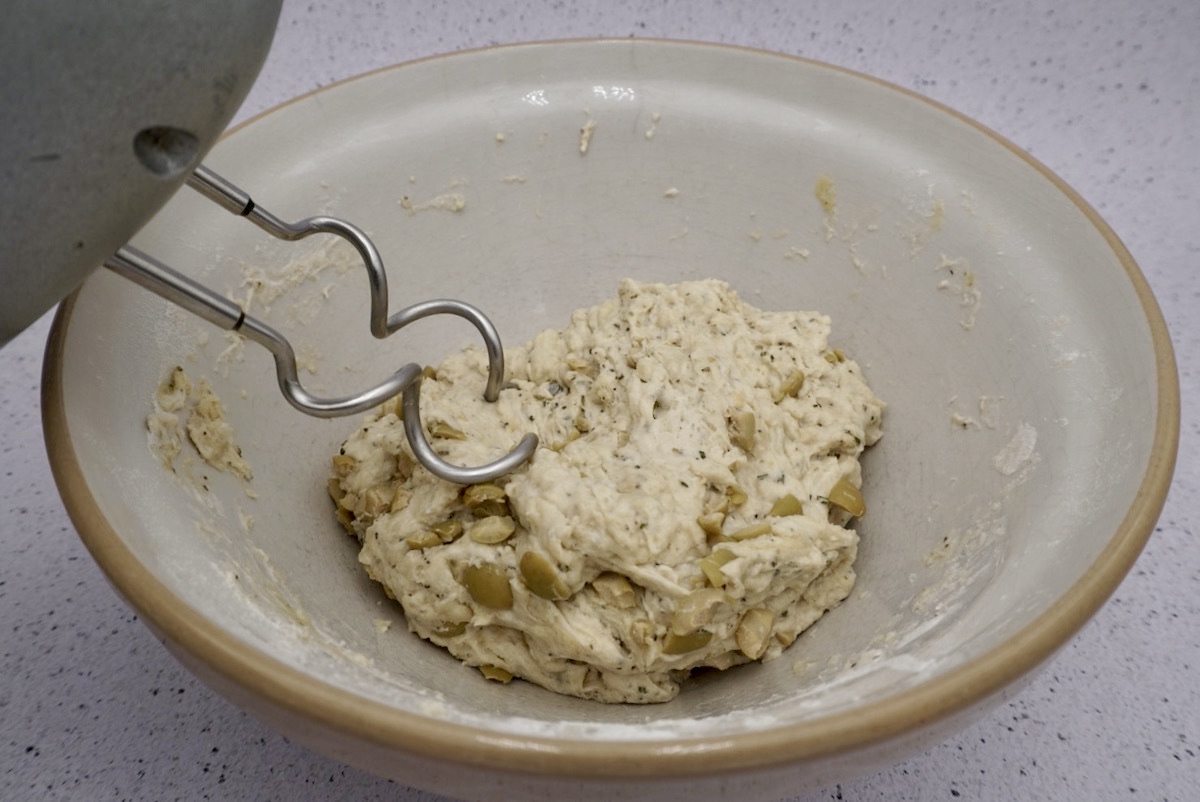
Place a large plate or other covering over the top of the bowl to prevent drying out whilst proving. Leave the bowl of dough in a warm place to prove for around 1 to 2 hours or until it has roughly doubled in size.
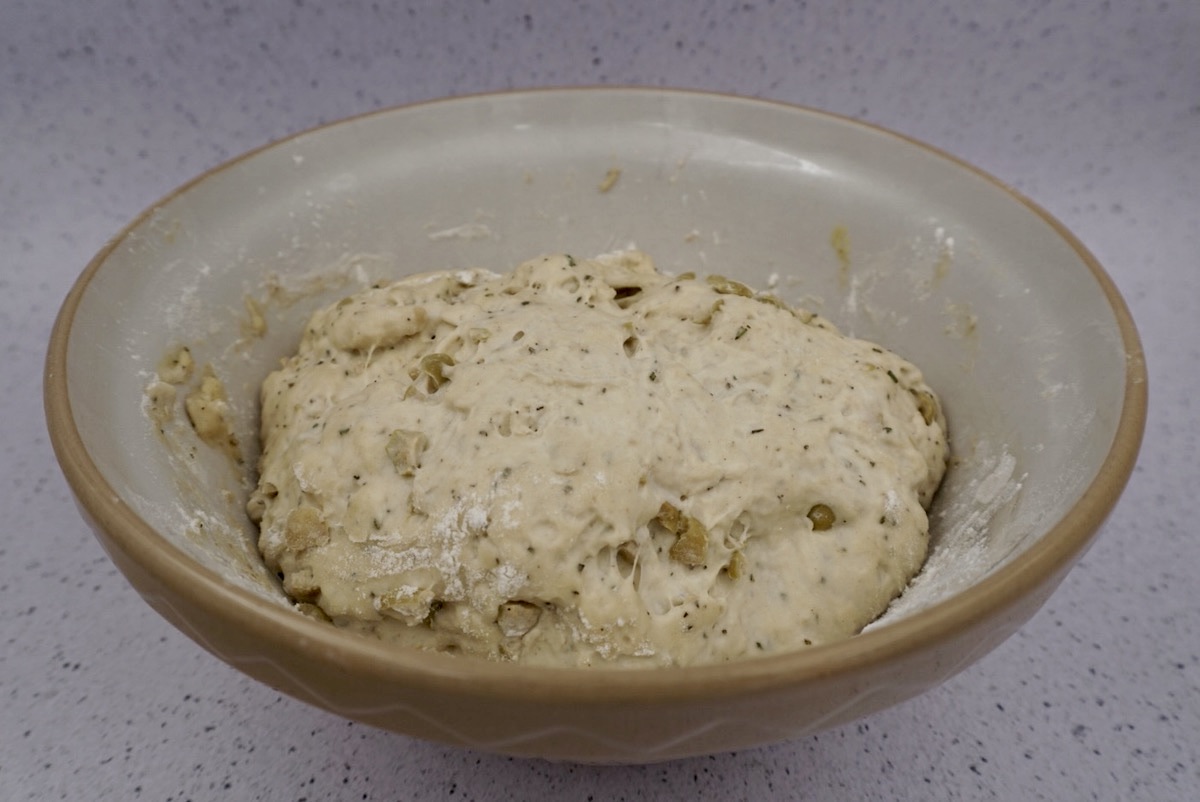
Tip the dough from the bowl onto a floured board, using a spatula to scrape the dough from the sides of the bowl.
Divide the dough into around 13 pieces and shape into balls by hand. You may wish to make a slightly different number of rolls depending on the arrangement you wish to make.
Line a baking sheet with non-stick baking paper. Arrange the balls of dough on the lined sheet close together so that when they expand during the second proving and whilst being baked they will fuse together. The balls of dough can be arranged to form a circle, rectangle or any other shape you wish.
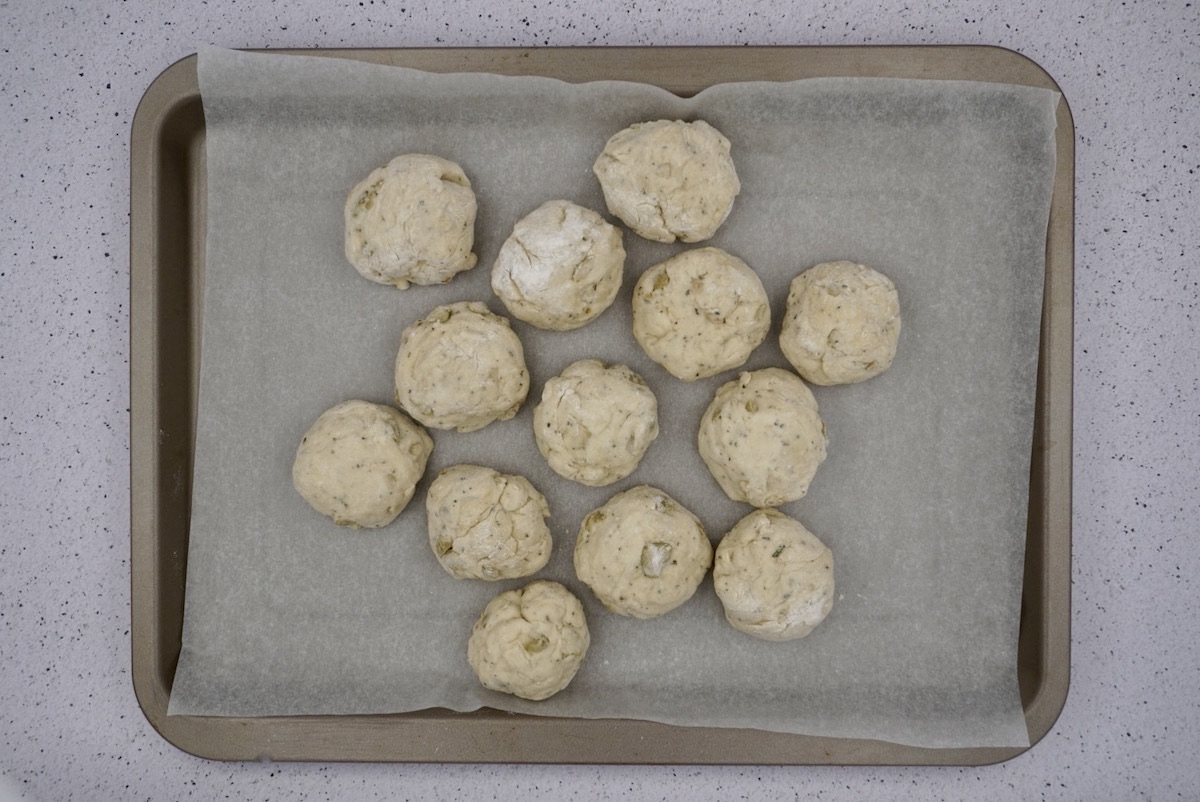
Leave to prove for a second time in a warm place for around half an hour to an hour.
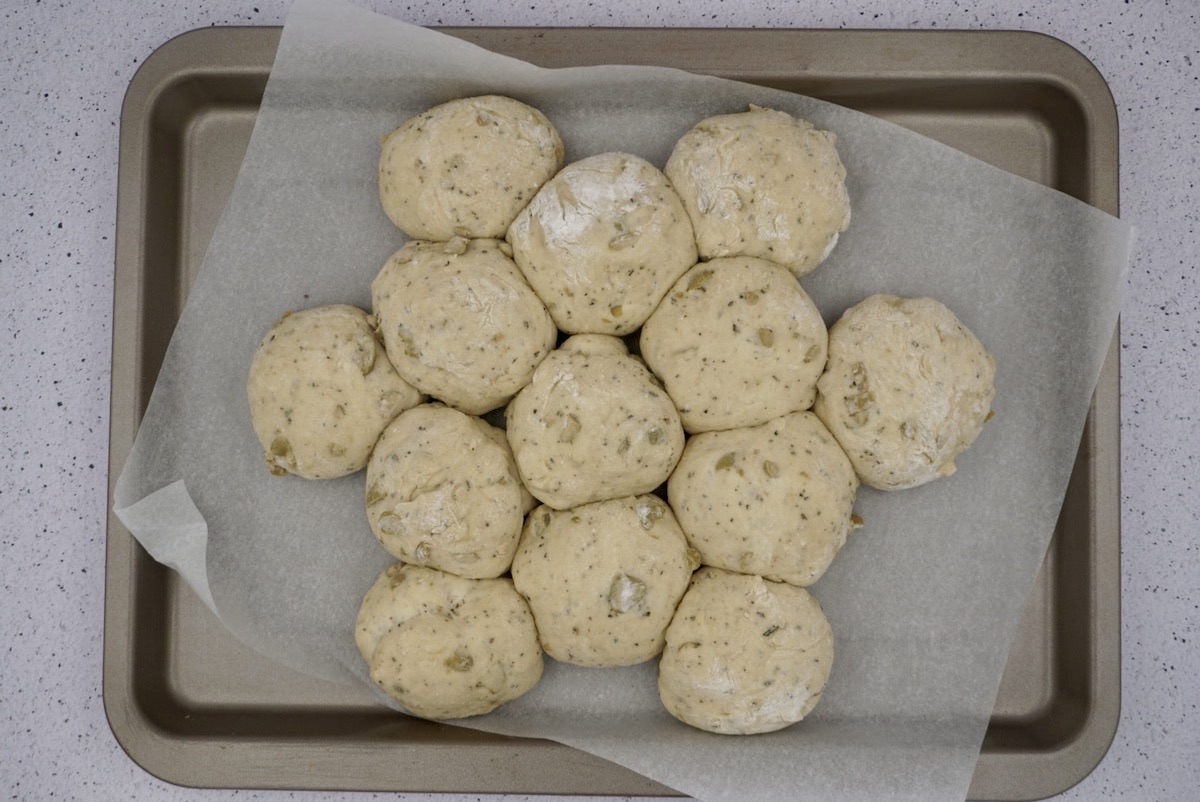
How to bake your rosemary and olive rolls
Preheat the oven to 220oC, 425oF, gas mark 7.
Brush the tops of the bread rolls with a little milk and then bake for around 15 to 20 minutes or until slightly golden. Check during the cooking time and turn the tray around during the cooking time so that they bake evenly. If you find that some rolls are cooking more quickly than others individual rolls can be covered with a small piece of foil before returning to the oven to prevent them becoming overcooked.
Leave to cool on a wire rack.
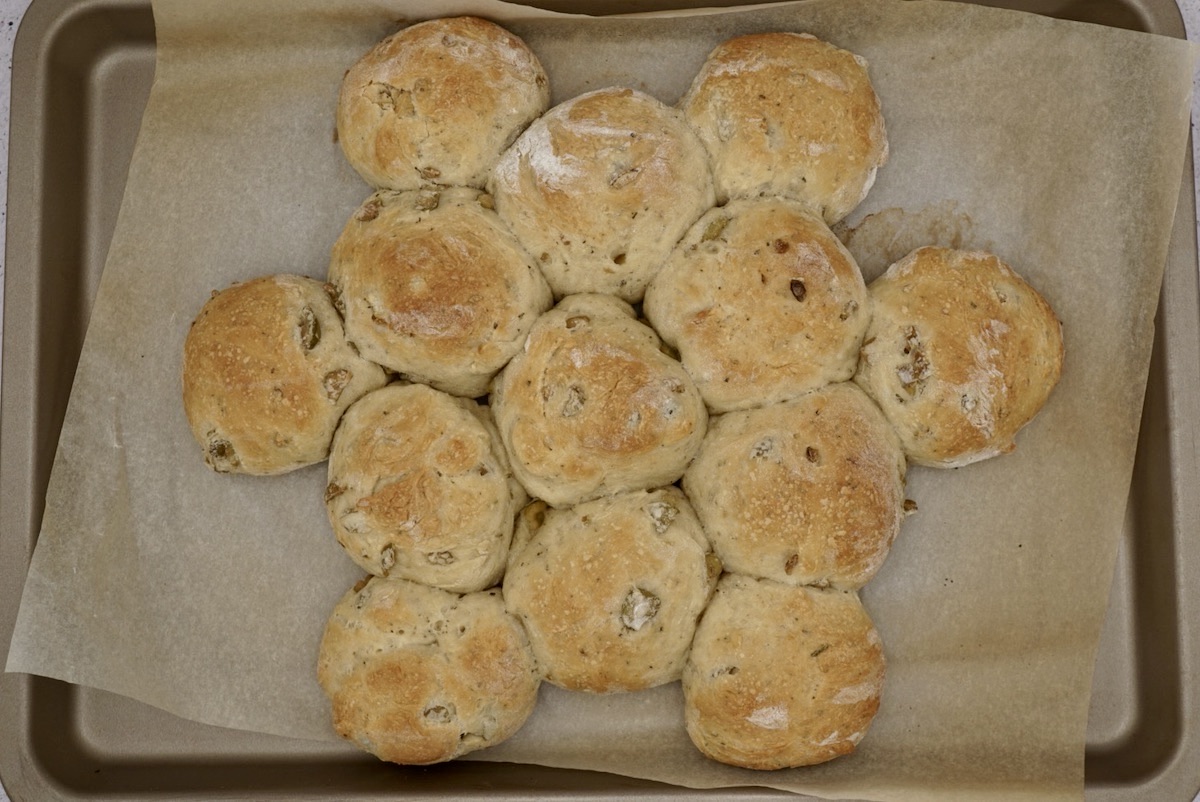
Tips
- When baking with yeast, ALWAYS check that your yeast is well within the use by date. Even yeast approaching the use by date may have lost some of its effectiveness. It is very disheartening to spend time making your own bread and find that it doesn't rise.
- If you don't have an electric mixer with dough hooks or don't wish to use one, then you can knead the dough by hand for around 15 minutes or so.
- It is likely that some rolls will cook quicker than others, especially those at the edge. Check how your bread is baking at regular intervals. If any rolls are browning quicker than others simply cover any individual rolls with a small piece of foil before returning to the oven to finish baking the rolls.
- The rosemary and olive rolls can be frozen either individually or as a group. Simply defrost at room temperature, in a microwave on the appropriate setting or in your oven at a low temperature.
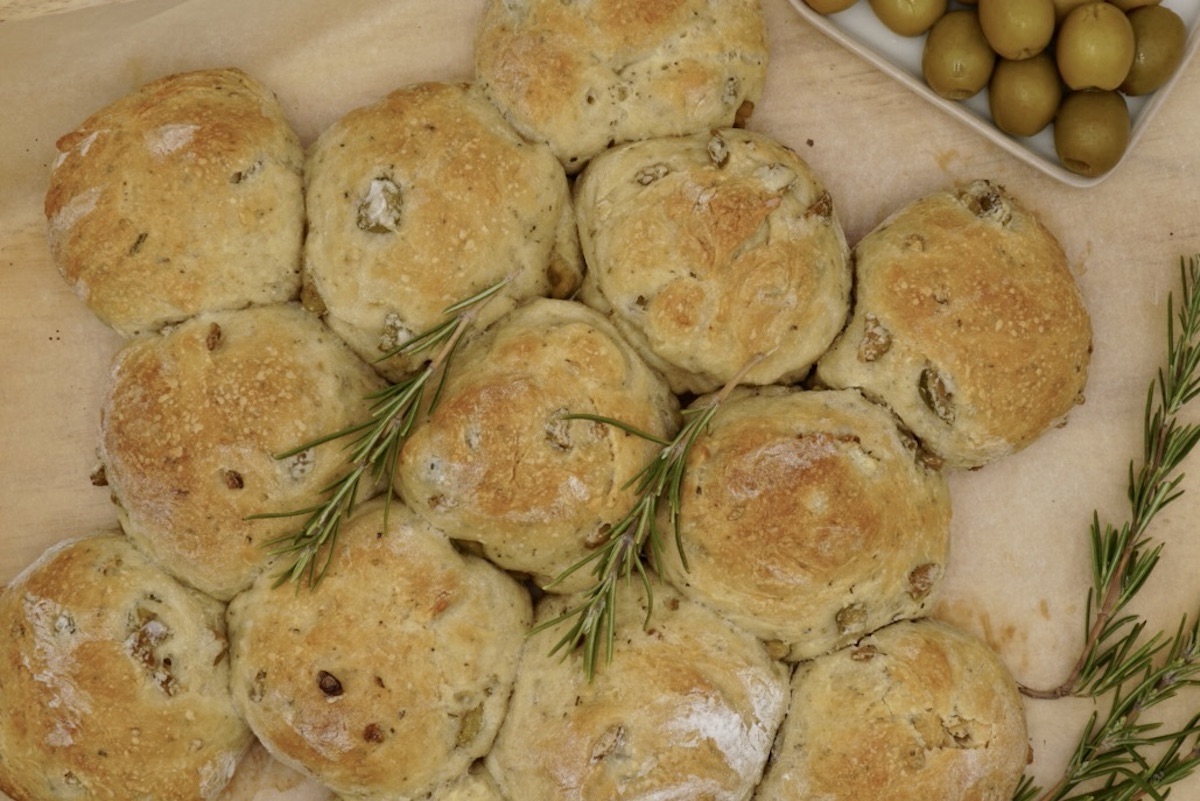
Other tasty bread recipes
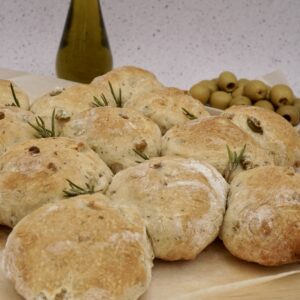

Rosemary and olive tear and share bread
Ingredients
- 375 g bread flour
- 3 teaspoon easy bake yeast
- 1 teaspoon sugar
- 1 teaspoon salt
- 100 g olives pitted
- 2 teaspoon rosemary
- 200 ml water
- 3 tablespoon olive oil
- 3 teaspoon milk
Instructions
To prepare
- Chop the fresh rosemary leaves and chop or slice the olives ready to add to the dry ingredients for the dough.
- Measure the flour, yeast, sugar, salt, rosemary and olives into a large bowl and mix.
- Heat the water until it is hand hot and add to the dry ingredients. Start by adding 180ml and add more if needed after adding the olive oil.
- Add the olive oil.
- Mix using an electric mixer with dough hooks for around 2 to 4 minutes until the dough is elastic and forms a ball. The exact amount of water needed will vary slightly depending on the flour used. If the dough is dry and stiff then add a little more water, it is is too wet and sticky add a little more flour.
- Place a large plate or other covering over the top of the bowl to prevent drying out whilst proving. Leave the bowl of dough in a warm place to prove for around 1 to 2 hours or until it has roughly doubled in size.
- Transfer the dough to a floured board. Divide the dough into around 13 pieces and shape into balls by hand. You may wish to make a slightly different number of rolls depending on the arrangement you wish to make.
- Line a baking sheet with non-stick baking paper. Arrange the balls of dough on the lined sheet close together so that when they expand during the second proving and whilst being baked they will fuse together.
- Leave to prove for a second time in a warm place for around half an hour to an hour.
To bake
- Preheat the oven to 220oC, 425oF, gas mark 7.
- Brush the tops of the bread rolls with a little milk and then bake for around 15 to 20 minutes or until slightly golden. Check during the cooking time and turn the tray around during the cooking time so that they bake evenly. If you find that some rolls are cooking more quickly than others individual rolls can be covered with a small piece of foil before returning to the oven to prevent them becoming overcooked.
- Leave to cool on a wire rack.

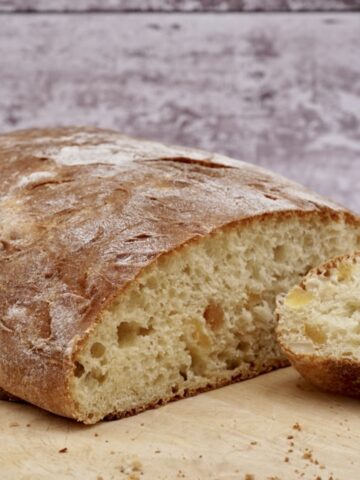
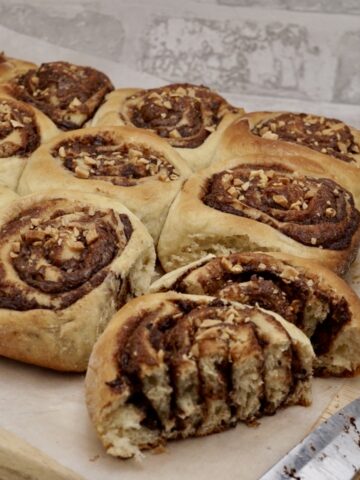
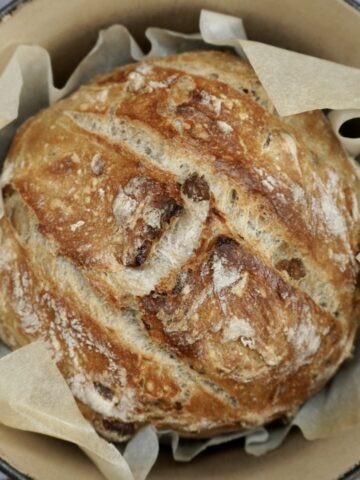
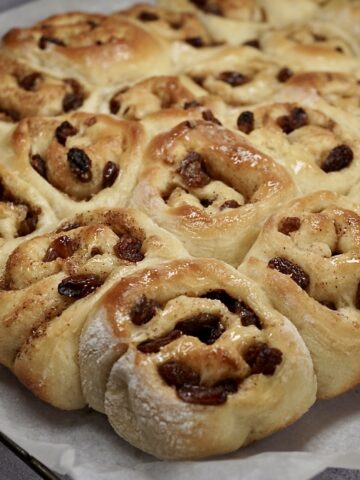


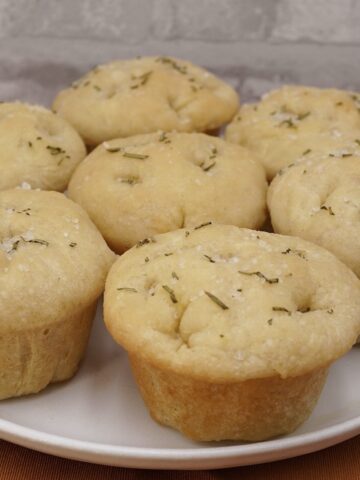

Melissa
i am going to try this tonight. Thanks for the ingredients listed by weight -I am confident they will come out right.
Judith
I hope you enjoyed them! 🙂
Christina's Bread Bakes
Olives in bread dough can be a bit tricky as the flour/salt must be adjusted accordingly depending if they are brined or in olive oil. But, the flavor combo was excellent!
Judith
I'm pleased you enjoyed the flavour! Thank you for letting me know. 🙂
tianna
love the rosemary flavor in these buns
Judith
It's good to hear you enjoyed them 🙂
nancy
delicious rosemary bread! it was really easy with your tips. Thanks
Judith
I'm pleased you found this bread easy to make and that you enjoyed it. Thank you for letting me know 🙂